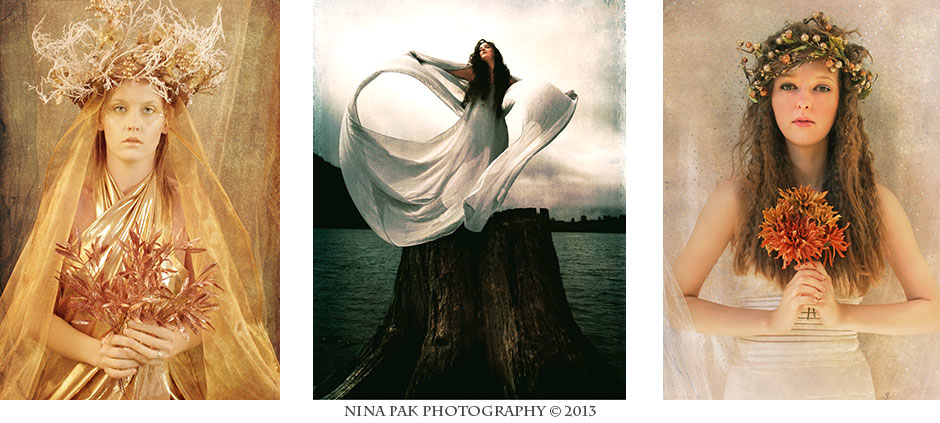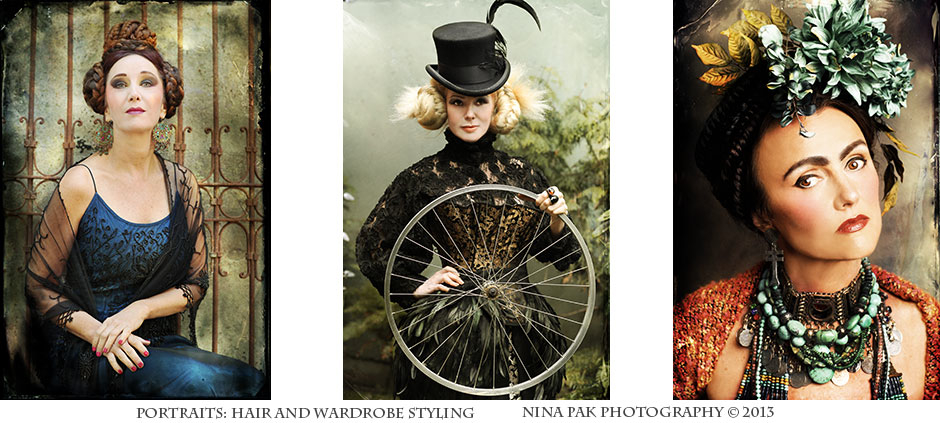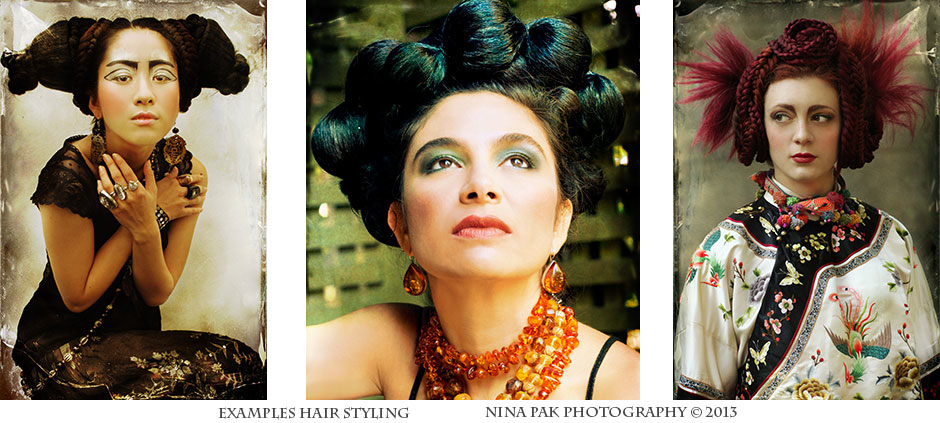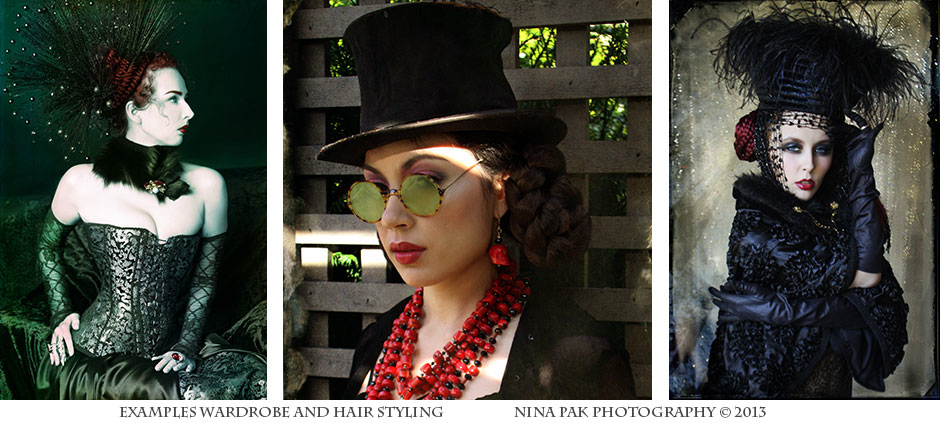Here is an exclusive interview with Nina Pak, the Art Director / Curator, Staff Photographer for Miroir Magazine.
Q: What fascinates you in regard to the images you have been creating lately?
A: I find that I am drawn to reflections and shadows, mirrored images, textures and delicate details, anything that has potential for a story. Small objects from nature, little antique treasures, costumes that speak for themselves, something unique and wonderful.
Q: Symbolism seems to be a major component of everything you create, can you speak about this?
A: I have always been drawn to symbolic imagery, from ancient orthodox Icons to Tibetian Tankas, art that tells a story of the soul’s journey is of interest to me.
Painters that have worked with symbolic elements such as the Pre-Raphaelites who’s paintings often depict mythological stories, and surrealists who delve deeper into psychological meaning, are what I study. I have a lifelong love affair with these paintings, which are not only objects of beauty but also have a message.
Q: You have many creative talents, and it was not until later in your life that you focused on photography, why is that? What would you be doing if your path did not lead you to the photographic medium?
A: I am driven to manifest my dreams. If I am not involved in something creative, I get moody and sad, and eventually depressed. However, it doesn’t matter what medium I work in; if not photography, then I like to paint or draw, make jewelry, or write. Many years ago I worked with clay and in college I was a printmaker. I am happy doing anything creative. I finally found that Photography was a more social creative medium, and I tend to be very introverted and solitary, so doing this work helps me get out and meet other people and collaborate.
I did some photography in high school, but I did not have a good camera. It was only years later that I was given a professional camera, and took it up again as a creative medium.
 Q: You do self portraits every year. Do you recommend that artists photograph or paint themselves?
Q: You do self portraits every year. Do you recommend that artists photograph or paint themselves?
A: Yes, actually many artists do this without intending to; I have noticed that faces and figures often look like the artists who paint them. I do the self portraits sometimes when I feel like experimenting but there’s no model around. I do learn something about myself when I do these portraits. I see in my eyes apprehension, melancholy, doubt, fear. All the things that are locked away can be seen in those photos. I think that every job is a self portrait in a way, there is a mark or style that is clearly part of the artist, it becomes our trademark, and if we are able to uphold that standard we set for ourselves, then we autograph our work with excellence.
Q: Do you feel you have lived up to your own expectations?
A: There is a quote by Henry Wadsworth Longfellow I like very much: “We judge ourselves by what we feel capable of doing, while others judge us by what we have already done.”
This pretty much sums up how I feel about my own expectations, I always have far more to accomplish than I have time in this life to do. Every day I would like to do more, I always feel I have come up short of what I am capable of doing. I always feel less than I am, because no matter how well I do, I know I could do better. I wake up each day with ideas and plans and can’t wait to get to work on something creative, I try to enjoy the moment, and look forward with hope, but I regret the lost years of my youth when I wasted time on things that came to nothing, when I could have been more productive. So the short answer is that I will never live up to my expectations. I only hope that there is still time to do more, to improve, to fulfill some of my dreams.
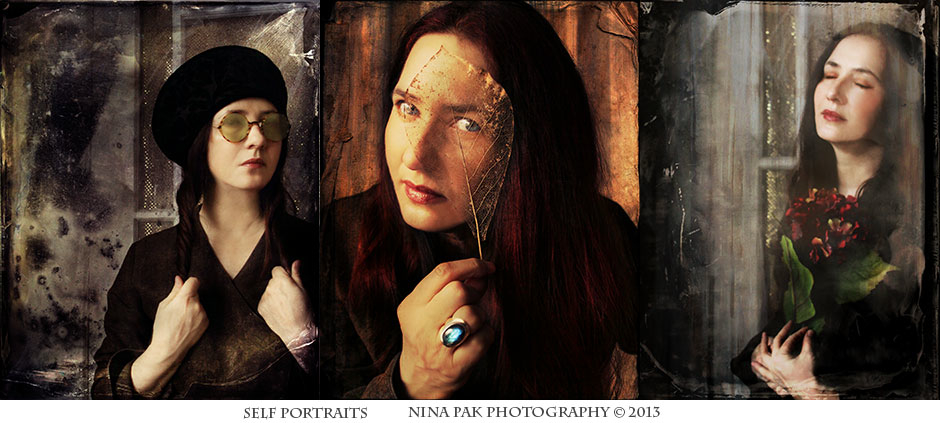 Q: Who do you look to for honest critique of your work?
Q: Who do you look to for honest critique of your work?
A: There is only one person in my life who has told me what I need to hear, even when I didn’t want to hear it, and he did it in such a considerate way that I was able to recognize the truth in his words. That is my husband Ilia. It is much easier to give praise than to critique, and also easier to hear praise than to be critiqued. But to have someone in your life with whom you feel completely comfortable, who can be honest with you, is essential. Of course there are people whom I trust, who I consider my friends, that I would respectfully listen to, I am open to their critique. I think if you want to have that kind of honesty in your life, you have to value it.
Q: Is art essential to your happiness and well being?
A: Yes, I believe that expressing your creative energy is also necessary for good health. Not that everyone needs to be an “artist” but they need to be able to have a creative outlet of some kind. Also happiness is a by-product of right action. If you do what your soul yearns to do, if you do what creates harmony, then all those good things come back into your life and make you feel content.
Q: Do you believe that art should reflect the world, and bring to light the negative or corruptive forces? Is it the artist’s responsibility to represent the pain of the world?
A: I get into discussions at times with artists about this topic. I had one artist accuse me of making images that were too pretty and safe. He believes that to be significant as an artist you have to deal with real issues and express the pain of society. Life is messy and difficult most of the time, I never really understood that until recently, I mean, I always thought it was something to get past, that war would pass, that violence was a reaction to something that could be fixed… Now I have a very humble gratitude for every beautiful and happy experience that comes my way. I had an abnormal amount of stress and drama in my childhood, a lot of tragedy in my past, I don’t want to carry my dead, I want to let it go, I have no reason to reflect all of that in my art, I have lived it. From the time I was very small I began to create a world where I could feel safe, a place that was filled with beauty. It is not a place to escape to, but a place that nurtures my soul and helps me live in this world. I try to share that world through my art. To make those intangible dreams come to life. If I could do anything in my lifetime, it would be to make the world more like my dreams.
Q: How do you organize your collaborative shoots and what are your feelings about collaborative work in general?
A: I generally use Model Mayhem when looking for models and stylists, it is easy to communicate with everyone if they are on one site. I have a folder system for my shoots there. However there are other websites where I sometimes communicate with talent as well.
Many of the shoots I put together are collaborations between the designer, the styling team, the models and myself. Usually I am organizing the shoot by suggesting a theme, setting, and style. But my concepts always leave room for creative freedom. I gather awesomely wonderful talent, whom I trust to do excellent work, I don’t like to hinder them by controlling what they do too much. I also feel that if we are creating together, I want everyone involved to end up with something they love, something useful for their portfolios. I have pretty high standards, so I look for people who have a similar esthetic, and who have great energy .
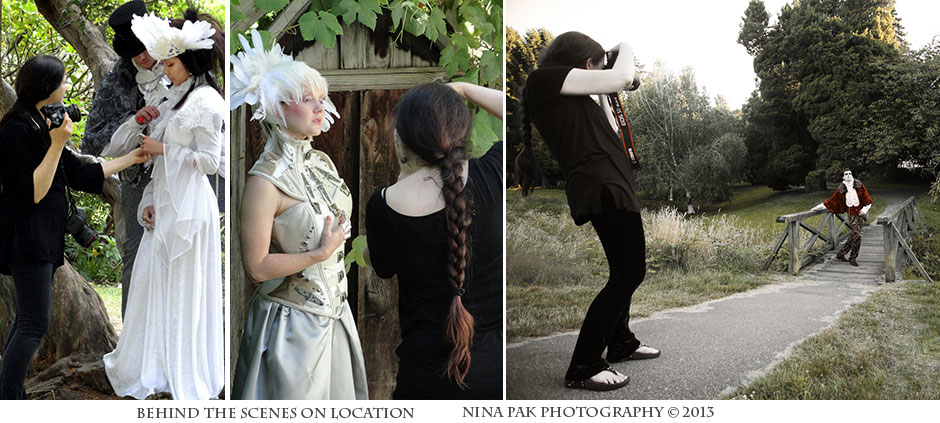 Q: Have you run into any conflicts or difficulties working with so many creative people at once? I imagine there are some disagreements or control issues at times. How do you deal with that?
Q: Have you run into any conflicts or difficulties working with so many creative people at once? I imagine there are some disagreements or control issues at times. How do you deal with that?
A: Well, yes, in fact there have been some. LOL.
With models… I don’t tolerate Divas, and I do not let anyone disrespect my styling team or me. I have had models who have been unkind, unreasonably demanding , or just inflexible and ill tempered. I just ask them to leave. I really do not care to give my time to anyone who is not respectful. Not even if they are paying me for my time. It is not worth the stress they create.
Q: Really? Didn’t that put you in a bad situation?
A: It could have, but I do have a list of models who can come to a shoot if there’s a cancellation, usually I can find someone to fill in. It is stressful to find someone on shoot day, of course, but that is better than working with someone who does not have good energy.
Q: How do you deal with no-shows?
A: Thankfully I do not have many. However, I will not rebook a model who does not show up for a shoot. If there is a really good reason and they call me on shoot day to explain, then perhaps I will give them another opportunity. That does not include texting! I really expect a phone call. Basically it is all in the attitude, if showing up for a shoot we have worked for weeks to set up is not a priority, then I just don’t care to work with that model.
Q: Any other issues you have had to deal with, any advice how to handle unexpected problems?
A: I had a designer who treated our collaboration like a paid shoot, in other words she wanted everything her way; she was inconsiderate of the others who were giving their time for the creative process. This is only one example among several issues that came up during our creative project:
I tell my stylists, who are doing trade, they have the freedom to do what they like. We usually start out with a light look and then build on that, so the next look is a smoky eye but with the last outfit they are free to be creative. This designer told them when they arrived that they could only do what she wanted, so they were unhappy, it was not useful for them. Then I told them to go ahead and do what they planned, but then the designer was unhappy. If it is a paid shoot, then of course the client is free to give advice and have it their way.
After this experience I learned to make my intentions very clear upfront. If I do creative collaboration, I make sure everyone is agreeable. Good communication at the on-start of a project makes a difference, then everyone knows what to expect. Sometimes no matter how hard you try, you cannot find a way to work with certain people, and I don’t feel a need to waste my energy with them, even if they do make amazing garments. The love has to go both ways.
Q: The collaborative shoots, is that the same as TFP or TFCD? Does it mean you do all this work for free? And if so, why would you do that?
A: I have been doing a lot of trade work or collaborations for that last five years, mainly with designers who are either just starting out or who are emerging into a new market or style and need to get their work seen in publications. I have done this for several reasons: First of all, I had an interest to build a fashion portfolio and I wanted to work with talented designers, those who were interested and available to work with me were those who also had a need to build a portfolio, so it was mutually beneficial. Like-wise it was helpful for the stylists and models who took part. I no longer do much trade work as I have developed a good portfolio and have distinguished myself in that market.
A: I find that I am mostly hired to do stylized portraits, some of my clients call them soul portraits. They tell me I see into some hidden depths of their soul and reveal an essence of their inner being. But I think what I provide is an idealized image that is close to how that person sees themselves in their minds eye, rather than what they see in the mirror; it sometimes involves fantasy elements, photo-manipulation and a lot of editing. Most often it is for women between the ages of 40 and 60, this is one of my specialties, I can make someone look years younger, thinner, healthier, and still look natural, like themselves, but with the signs of age removed. I also do portfolio development for models and actors, look-books for designers, and some cover art for books.
Q: You do styling as well as photography for your shoots… How did that come about? I notice you never credit yourself for Wardrobe and Hair Styling.
A: What is that saying about the mother of invention? I learn to do what I need. I am not one to be stopped by the lack of someone to assist me. I just figure it out. I do have an eye for wardrobe styling , it just took the right circumstances to make me realize I could do it myself. I have a feeling for how things should be put together, years of training in color and pattern, I know what works. Likewise if I don’t find a hair stylist that I love, I can do that too. I like big hair, so I sometimes build hair sculptures, or add hair pieces to make intricate hair styling creations. Sometimes the right styling can make all the difference, can take it to another level, and add that something special that is needed to make the image wonderful. As to credit, I generally use my business name Dreamloka for my styling work. Dreamloka is sort of a catch- all for the other creative projects I do.
Q: Doesn’t that get confusing at times? When you wear several hats, so to speak?
A: No not really. Just to be clear, if I have invited a hair stylist, designer, wardrobe stylist, or someone who does set design to collaborate or work with me, I completely trust them to do their job and I do not interfere. I enjoy seeing what other artists will bring to a creative shoot.
Unless I am asked, I don’t do the styling for designers as they usually choose to do that themselves. I do have a favorite designer I work with a lot now, and she likes me to style for her, we have a lot of fun together. Again, I like to agree up-front what each person will be doing, so there is no confusion or misunderstandings.
Q: You are widely published. Can you name a few books or magazines, other than Miroir and your self-published books?
A: I have six images in the book by Focal Press titled The Naked and The Lens. I have been included in Spectrum #17 and #18: (The best in Contemporary Fantasy Art). I have editorial spreads and covers in several issues of Mami Magazine, and Vigore Magazine, I have had more than one editorial spread in Dark Beauty, Freshly Worn, Focus of New York, Vedere, Phassion, as well as spreads in Glam Couture, Hacid, W-25, Koncept, Dezi, Flawless, Wise, Couture living, Le Rougue, 944, GW, Love, Expressions. I know I am leaving some out, but those are most recent publications.
 Q: What kind of muse do you look for? How does the model influence your work?
Q: What kind of muse do you look for? How does the model influence your work?
A: I like different. A model does not have to have a typical beauty to be of interest to me, I like unusual features. They also do not have to be agency represented, tall or stick thin… unless it is a shoot for fashion and the samples are for tall, thin models. Mostly I am interested in art, so I require a model who is comfortable in her skin, who is graceful with her hands, who can show me some depth of mood and expression. Who can do awkward without being uncomfortable. I am fond of models with long hair, but if they have a Mohawk or some other quality that intrigues me that is works for me too. What is inside the person is most important, some quality of character, which is a little hard to define, but I know it when I see it.
The unexpected discoveries are what inspire me, I look for a muse who is open to exploration, I hope to find something special in my model. I find the human body beautiful, I like to work with a nude form, it is easier to blend an unclothed figure with layers in my post production, to make art. For me it is not about a naked form, it is about fine art. I also like to use elaborate and beautiful costumes or wardrobe, in either case I look for elements of the unusual, the mysterious, and the sensual. I like dramatic, but I tend to find the subtle beauty in my models.
Because I like to photograph people, my work would be empty without my muse… I am, in every case grateful beyond measure for the kindness and trust that my models give me. I am always exploring how to best capture their beauty. I sometimes want to be more edgy, weird, strange, surreal… but I find that most often my work is dreamy, with a Pre-Raphaelite tone to it.
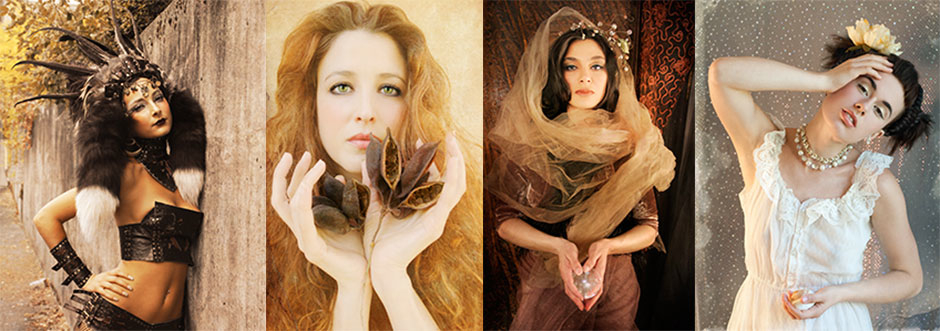 Q: What are your future plans?
Q: What are your future plans?
A: Our lifetimes are one long journey to discover who we are and what we are capable of. Hopefully we learn soon enough to do something good for the world, and to manifest beauty through our art. I always have projects going on, but I will be focusing more on art, fantasy portraits and fashion now; making some books, and now I am partnered with Jo David to produce Miroir Magazine. A labor of love, and something I have wanted to do for many years. I am very grateful for this opportunity to create such beautiful treasures with people I value and respect.




